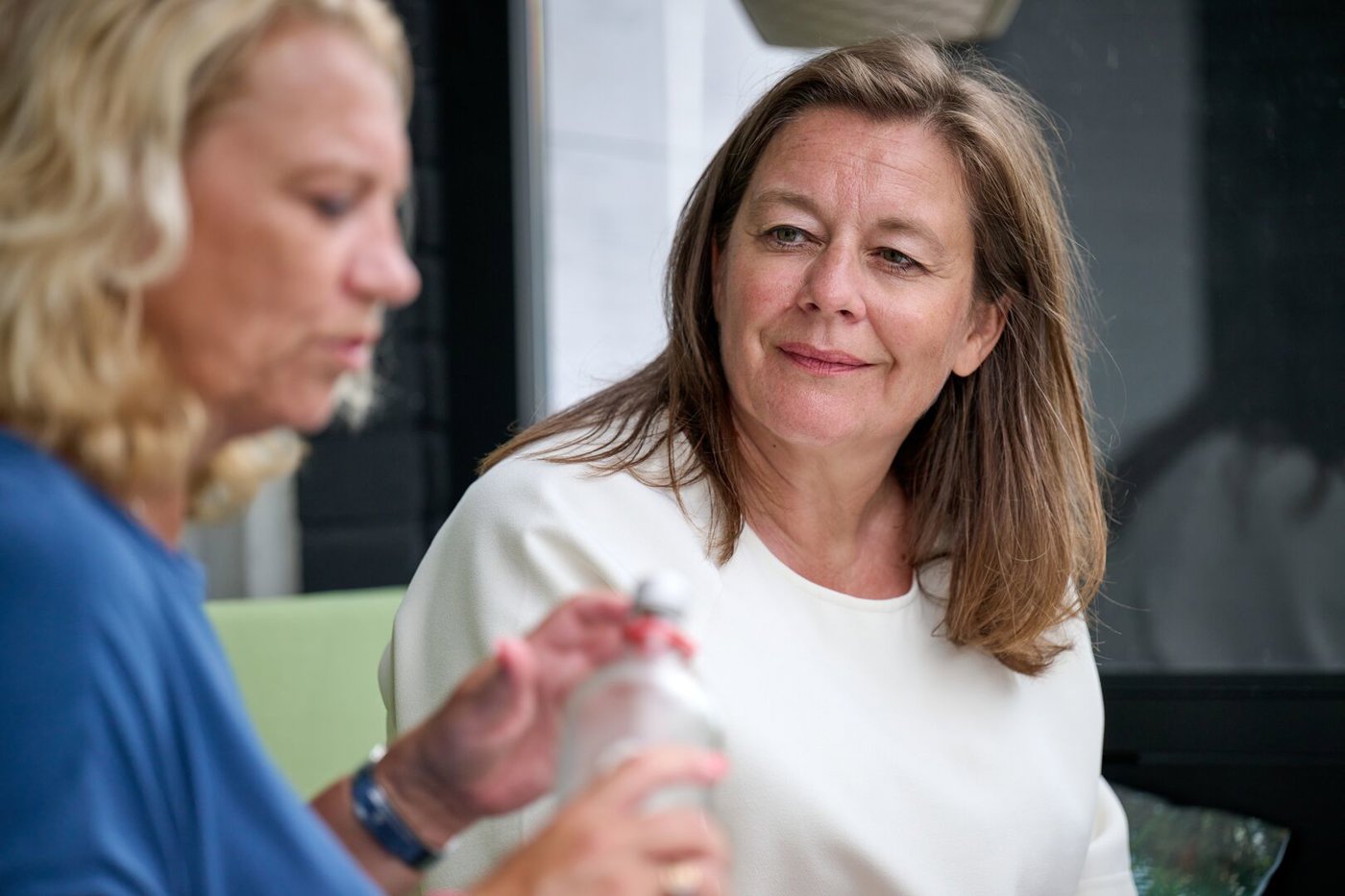Annette Mosman goes walking with Dominique Hermans. She is the Chief Executive of Randstad Northern Europe. Additionally, she is a member of the Board of Directors of the Amsterdam Economic Board. A conversation with her about the position of women, the labor market and the long-term perspective of the working population.
In a nutshell:
- Discussion about many issues, the common thread was the financial independence of women.
- Randstad participates in projects to combat inequality of opportunity, such as local initiatives that ensure that childcare is available and accessible to everyone.
- Advocate for change at various levels, improving the position of women; socially, but also among employers.
Shoes off, legs on the table; that’s not what Annette and Dominique do. However, it is quite tempting after the walk they had through a part of the ‘Groene Hart’. “A great walk”, Annette says to Dominique when they arrive on the terrace in Aalsmeer. The Chief Executive of Randstad Northern Europe nods. “And we had some good conversations along the way.”
Many topics were discussed, but the common thread was women’s financial independence. “Women don’t have enough action perspective”, Annette firmly states. She refers to the fact that women on average accrue 400 euro less in pension than men, resulting in a pension gap of almost 40 percent. “And the problem as a woman is that it is impossible to bridge that gap. It is a fact that Dutch women work part-time more often and on average perform 10 hours less paid work per week compared to men”, Annette says.
Not properly balanced.
Dominique agrees with Annette. “We just don’t have a proper balance in the Netherlands”, she says. And it is also the case, according to her, that if you are born in a disadvantaged family, it’s not easy to overcome that situation. “And women are most vulnerable in that respect.” According to Annette, the latter also is the result of a relatively high number of women working on a self-employed basis in certain industries. “This ensures more flexibility and the hourly rate is often higher than for someone in paid employment. So, that makes it a rather logic step but by doing so, women also have less security for the future.”
Dominique: “When you look at the self-employed market of 1.2 million people, 65 percent is male and 35 percent is female. If you then zoom in deeper into the different industries, it’s mostly women who are active on a self-employed basis in the sectors care, education, hospitality and cleaning. Especially those sectors have ‘smaller’ jobs for which the pay is less generous. Working on a self-employed basis increases the salary and the hours somewhat.”
